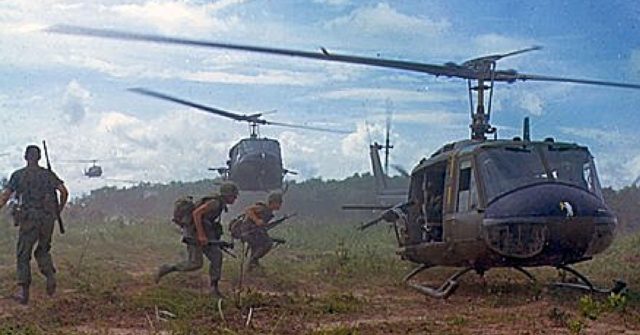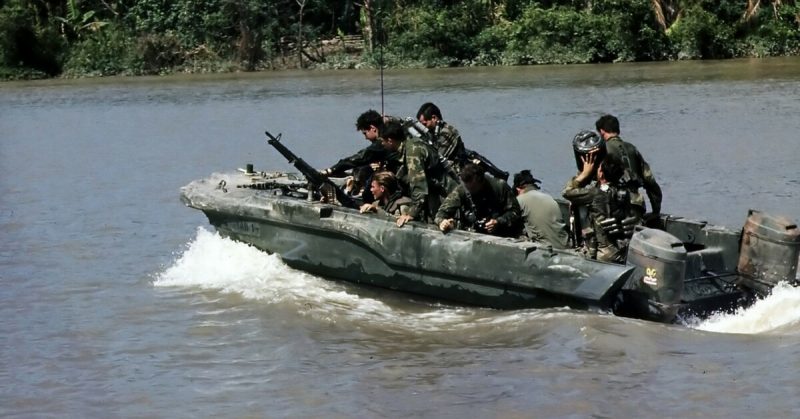It is not entirely unusual for politicians to be embroiled in controversy for one reason or another and former Senator of Nebraska Joseph Robert Kerrey is no different. However for Bob Kerrey, his controversy did not revolve around the halls of Congress or in national tabloids, but in the jungles of Vietnam some 30 years before his election.
From Nebraska to the Jungles of Vietnam
The future Senator was born on August 27, 1943, in Lincoln, Nebraska; the state he later represented. In 1966 he graduated from the University of Nebraska with a degree in Pharmacy. During the Vietnam War, he served as a US Navy SEAL officer from 1966 until 1969.
The full scope of what the Navy SEALs accomplished in Vietnam is not as easily attainable as some might think. People have written books on the subject, and some have made movies, but many of the missions they undertook remain secret. The USA becoming involved in fighting a war in Vietnam was hotly disputed at the time.
There has long been a duality of war where honor and gallantry lead the way with tragedy and atrocity looming behind. Collateral damage is a sad reality of any war. When it occurs, it affects those who witness it first hand as much or more as it does the public when they hear of it.

Thanh Phong Raid
On the evening of February 25, 1969, Kerrey led a boat of Navy SEALS on a raid on a small, isolated village named Thanh Phong. Intelligence information indicated a high ranking Viet Cong leader was hiding there. Using the element of surprise, it was the group’s intention to capture or kill him. The area was a free-fire zone meaning all friendly forces were presumed removed, and the rules of engagement were unconstrained.
Approaching the village, Kerrey reported that his team was shot at from the village and immediately they returned a hail of fire. Afterward, the SEALs moved into the village and discovered a terrible scene. Huddled together in one hut were 14 or so dead civilians, mostly women and children. Kerrey later said in an interview “I was expecting to find Vietcong soldiers with weapons, dead. Instead, I found women and children”. His harrowing account of the events was supported by all Kerrey’s team except one who claimed the SEALs had rounded up the villagers and killed them so as not to alert enemy troops.
The North Vietnamese gave a more gruesome account of the raid. Their version is that the SEALs slit the necks of two old men and then killed their grandchildren who had been hiding in a sewer pipe. They then shot dead the remainder of the villagers including three pregnant women. There was one 12-year-old survivor. On display in Ho Chi Minh City at the War Remnants Museum is a piece of the pipe.
Regardless of which account people believe to be true, the death of civilians in a war is always a tragedy and yet is always a reality.
Kerrey was awarded a Bronze Star for his actions in the raid. The official American version is that the SEALs killed 21 Viet Cong, destroyed two shelters and captured two enemy weapons. A few weeks later, Kerrey took part in the action that earned him the nation’s highest military honor.

Medal of Honor
On the evening of March 14, Kerrey and his team of SEALs were back in action. With intelligence that political leaders of the Viet Cong were holed up on a tiny island in the bay of Nha Trang, they set out to capture them. In a desire to maintain the element of surprise, Kerrey and his team scaled a sheer 350-foot cliff to gain the high ground. He then divided his men into two separate teams and led them down towards the enemy camp.
As they drew near, intense enemy fire rang out, and grenades soared through the air. One grenade landed at Kerrey’s feet exploding on impact. The blast tore through his legs and threw him back on to sharp rocks. Bleeding profusely and in great pain, despite his injuries, he coordinated his men to fire upon the Viet Cong. Caught in the devastating crossfire they became confused and fled in disarray. Kerrey then organized and secured an extraction site before slipping into unconsciousness. He was eventually evacuated by helicopter.
Kerrey survived and went on to great political achievements. He has expressed anguish over the events in Thanh Phong, saying “You can never, get away from it. It darkens your day. I thought to die for your country was the worst thing that could happen to you, and I don’t think it is. I think killing for your country can be a lot worse”.
There is a duality to war that is inescapable. Great heroism followed by inexplicable tragedy. Opinions vary, but in reality, war results in devastation for many.
